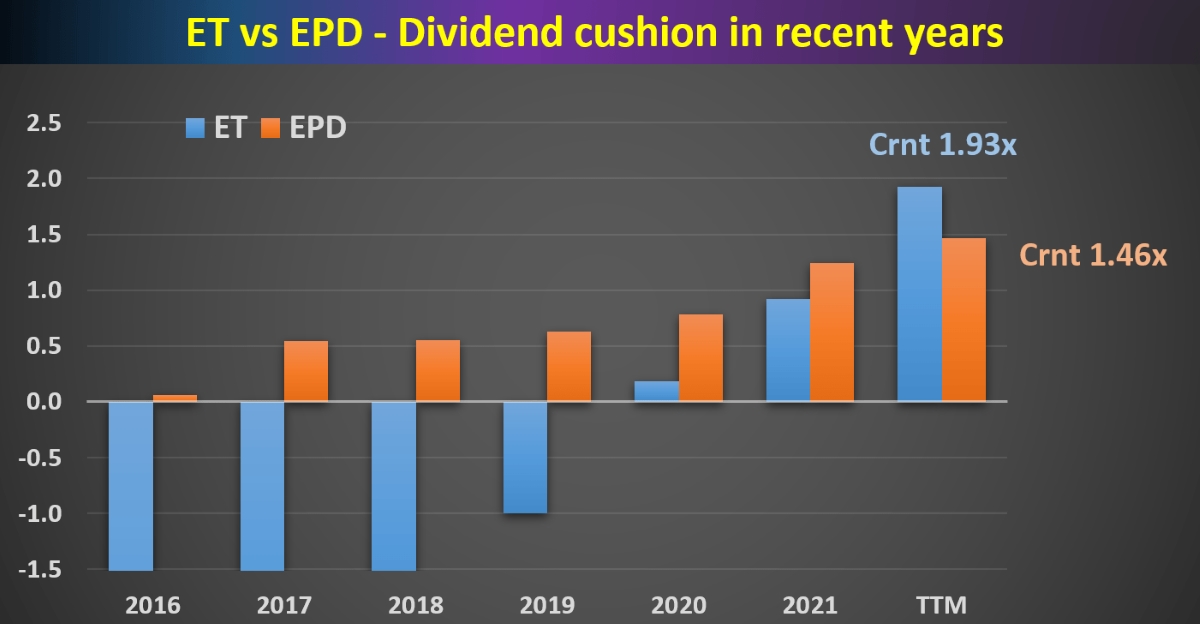

Finance
When Does Nintendo Pay Dividends
Published: January 3, 2024
Learn about Nintendo's dividend payments and find out when they pay dividends. Discover the financial aspects of Nintendo's business and their dividend schedule.
(Many of the links in this article redirect to a specific reviewed product. Your purchase of these products through affiliate links helps to generate commission for LiveWell, at no extra cost. Learn more)
Table of Contents
Introduction
Nintendo, a renowned Japanese gaming company, is not only known for its iconic gaming consoles and popular game titles, but also for its strong financial performance. As an investor, one of the key aspects to consider when evaluating a company’s financial health is its dividend policy. Dividends are monetary distributions that companies make to their shareholders as a way to distribute profits.
In this article, we will explore Nintendo’s dividend policy and delve into the factors that influence the company’s dividend payments. We will also take a look at Nintendo’s historical dividend payments, its current financial performance, and the outlook for dividends in the future.
Understanding Nintendo’s dividend policy is important for both existing shareholders and potential investors. Dividends can be an attractive incentive for investors, as they provide a steady stream of income and can enhance the overall return on investment. Additionally, a company’s ability to consistently pay dividends demonstrates its financial stability and long-term growth potential.
However, it’s crucial to note that not all companies pay dividends, especially those in the rapidly evolving technology and gaming industries. Some companies may choose to reinvest their profits back into the business to fuel growth and innovation. Therefore, analyzing Nintendo’s dividend policy will give us valuable insights into its financial strategy and commitment to rewarding shareholders.
In the following sections, we will dive deeper into the concept of dividends and explore how Nintendo approaches dividend payments. We will also discuss the various factors that influence dividend payouts, including the company’s profitability, cash flow, and future growth prospects. So let’s explore when Nintendo pays dividends and what factors affect their distribution.
Understanding Dividends
Dividends are a portion of a company’s earnings that are distributed to its shareholders. When a company earns profits, it has multiple options for utilizing those funds. It can reinvest them back into the business for expansion, make acquisitions, pay off debts, or return the money to its shareholders in the form of dividends.
Dividends are typically paid out on a regular basis, such as quarterly, semi-annually, or annually. They can be in the form of cash or additional shares of stock, known as stock dividends. The decision to pay dividends and the amount distributed are determined by the company’s board of directors.
Dividends serve as a way for companies to share their financial success with shareholders. For investors, dividends can be an attractive feature, as they provide a predictable income stream. Dividend payments can be particularly appealing for income-oriented investors and retirees who rely on a consistent and reliable source of cash flow.
From a financial standpoint, dividends are usually seen as a sign of a company’s stability and profitability. When a company consistently pays dividends, it indicates that it has generated sufficient earnings and has the necessary cash flow to support its operations and reward shareholders.
However, it’s important to note that not all companies pay dividends. Some may choose to retain their earnings to fuel future growth initiatives or invest in research and development. This is especially true for companies in rapidly evolving industries, such as technology or pharmaceuticals, where reinvesting profits into the business may lead to higher long-term returns.
Now that we have a better understanding of what dividends are and their significance, let’s take a closer look at Nintendo’s dividend policy and how it impacts its shareholders.
Nintendo’s Dividend Policy
Nintendo has a conservative approach to its dividend policy, aiming to provide stable and sustainable returns to its shareholders. The company’s primary objective is to ensure the long-term growth and success of its business while simultaneously rewarding its investors.
Under normal circumstances, Nintendo pays dividends once a year, typically in September, following the announcement of its financial results for the fiscal year. The dividend amount is determined by several factors, including the company’s financial performance, profitability, cash flow, and capital requirements for future investments.
Nintendo’s dividend policy is based on a payout ratio, which represents the percentage of earnings that the company distributes as dividends. In recent years, Nintendo has maintained a payout ratio of around 30%. This means that approximately 30% of its net income is allocated towards dividend payments.
One of the key reasons behind Nintendo’s conservative dividend policy is its commitment to maintaining financial stability. By retaining a significant portion of its earnings, the company can build up reserves for potential challenges and opportunities in the future. This disciplined approach ensures that Nintendo has enough capital to fund research and development, strategic acquisitions, and technological advancements.
Another important aspect of Nintendo’s dividend policy is its focus on sustainable dividend growth. The company aims to gradually increase dividend payments over time, aligning them with the growth in its earnings and free cash flow. This approach allows Nintendo to balance its obligation to reward shareholders with its need to reinvest in the business.
It’s worth noting that Nintendo’s dividend policy can be influenced by external factors such as changes in market conditions, industry trends, and regulatory requirements. Economic downturns or significant shifts in consumer preferences could impact the company’s ability to generate profits and, consequently, its dividend payments.
Overall, Nintendo’s dividend policy reflects its commitment to creating long-term value for shareholders. By prioritizing financial stability, sustainable growth, and responsible capital allocation, Nintendo strives to provide consistent and reliable dividends to its investors.
Factors Affecting Dividend Payments
Several factors can influence Nintendo’s dividend payments. Understanding these factors is essential for investors to have a comprehensive outlook on the company’s dividend policy. Here are some key considerations:
- Profitability: The most fundamental factor influencing dividend payments is the company’s profitability. Nintendo’s ability to generate consistent earnings plays a crucial role in determining the amount of dividends it can distribute to shareholders. Higher profits provide the company with more financial flexibility to allocate funds towards dividends.
- Cash Flow: Alongside profitability, cash flow is another critical factor impacting dividend payments. Nintendo needs to have a steady and sufficient cash flow to support its dividend distributions. A strong cash flow allows the company to fund operational expenses, invest in research and development, and pay dividends without compromising its financial stability.
- Growth Prospects: Nintendo’s future growth prospects are also influential in dividend decisions. The company may choose to retain a portion of its earnings to invest in growth initiatives, such as developing new games, expanding into new markets, or investing in innovative technologies. If management believes that reinvesting profits can lead to higher returns in the long run, it may allocate a smaller percentage of earnings towards dividends.
- Debt Obligations: Nintendo’s debt obligations can impact its dividend policy. The company must carefully manage its debt levels and ensure that it has sufficient cash flow to repay loans and interest. Meeting these financial obligations takes precedence over dividend payments, and if necessary, Nintendo may reduce or suspend dividends to allocate funds towards debt reduction.
- Regulatory Environment: Regulatory requirements and restrictions imposed by governing bodies can influence dividend payments. Compliance with financial regulations and legal obligations requires companies like Nintendo to maintain adequate capital reserves. These regulations can impact the amount of dividends that can be distributed, especially during times of economic uncertainty or financial distress.
- Global Economic Conditions: The overall state of the global economy can indirectly impact Nintendo’s dividend payments. Economic downturns or recessions may result in reduced consumer spending, affecting the company’s revenue and profitability. In such situations, Nintendo may adjust its dividend policy to preserve cash or redirect funds towards repaying debts or expanding its business.
By considering these factors, investors can gain insights into the potential variability of Nintendo’s dividend payments and evaluate the company’s ability to sustain its dividend policy over the long term.
Historical Dividend Payments by Nintendo
Nintendo has a consistent history of paying dividends to its shareholders. However, it’s important to note that the dividend amounts and frequencies have varied over the years, reflecting the company’s financial performance, market conditions, and strategic priorities.
For many years, Nintendo maintained an annual dividend payment schedule, typically declaring dividends in September following the release of its financial results for the fiscal year. In recent years, however, the company has transitioned to semi-annual dividend payments.
Looking back at Nintendo’s dividend history, we can observe the following:
- In fiscal year 2011, Nintendo paid a total dividend of ¥400 per share, split between an interim dividend of ¥200 and a year-end dividend of ¥200.
- In fiscal years 2012 and 2013, the company maintained the same dividend amount of ¥200 per share, distributed semi-annually.
- In fiscal year 2014, Nintendo increased its dividend to ¥240 per share, an increase of 20% compared to the previous year.
- From fiscal year 2015 to fiscal year 2017, Nintendo continued to pay ¥240 per share in dividends, demonstrating stability in its dividend policy.
- In fiscal year 2018, Nintendo announced a significant increase in the dividend to ¥420 per share, reflecting the success of its Nintendo Switch console and strong financial performance.
- In fiscal year 2019, Nintendo maintained the dividend amount at ¥420 per share, in line with its commitment to sustainable dividend growth.
- Most recently, for fiscal year 2020, Nintendo paid a dividend of ¥560 per share, representing another increase in dividend payments.
It’s important to highlight that dividend payments are subject to change based on various factors, including market conditions, financial performance, and strategic priorities. Investors should carefully monitor Nintendo’s announcements and financial reports to stay up-to-date with any potential changes to its dividend policy.
Overall, Nintendo’s historical dividend payments showcase the company’s commitment to rewarding its shareholders and providing them with a share of its financial success.
Current Financial Performance
Nintendo has consistently delivered strong financial performance, driven by its popular gaming consoles, successful game franchises, and innovative business strategies. As a result, the company has achieved significant revenue growth and profitability in recent years.
In the most recent fiscal year, ending March 2021, Nintendo reported net sales of ¥1.76 trillion ($16.1 billion), a remarkable increase of 34.4% compared to the previous year. This surge in revenue can be attributed to the enduring popularity of the Nintendo Switch console, which has continued to capture the attention of gamers worldwide.
Operating profit for the same fiscal year reached ¥640.6 billion ($5.9 billion), representing a staggering 81.8% increase from the prior year. This surge in profitability is a testament to Nintendo’s ability to effectively manage costs and capitalize on the strong demand for its gaming products.
Furthermore, Nintendo’s net income for the fiscal year was ¥480.4 billion ($4.4 billion), demonstrating a substantial growth of 85.7% compared to the previous year. This impressive performance showcases the company’s commitment to generating sustainable profits and delivering value to its shareholders.
One of the key drivers of Nintendo’s financial success is its strategic focus on creating innovative gaming experiences. The Nintendo Switch console, with its unique hybrid design, has been a major contributor to the company’s growth. Not only has it appealed to traditional console gamers, but it has also attracted a broader audience with its portable gaming capabilities.
Additionally, Nintendo’s strong game franchises, such as Mario, Zelda, and Pokémon, continue to resonate with players of all ages, contributing to the company’s consistent revenue stream. Nintendo has been able to leverage its beloved characters and intellectual properties to create engaging gaming experiences, further strengthening its position in the industry.
The COVID-19 pandemic has also played a role in boosting Nintendo’s financial performance. As people spent more time at home, the demand for gaming entertainment surged, leading to increased sales of Nintendo Switch consoles and games. This trend has contributed to the company’s impressive revenue growth and profitability.
Overall, Nintendo’s current financial performance reflects its ability to adapt to changing market dynamics, capitalize on innovative product offerings, and deliver exceptional gaming experiences. The company’s solid revenue growth, strong operating profit margins, and robust net income illustrate its financial strength and position it for continued success in the gaming industry.
Future Outlook for Dividends
The future outlook for dividends from Nintendo appears promising, given the company’s strong financial performance and commitment to shareholder value. Several factors indicate a positive trajectory for dividend payments in the coming years.
Firstly, Nintendo’s consistent revenue growth and profitability provide a solid foundation for sustaining and potentially increasing dividend payments. The popularity of the Nintendo Switch console, along with the strong demand for the company’s game franchises, is expected to continue driving revenue growth and generating robust cash flow.
Moreover, Nintendo’s strategic focus on expanding its reach in the global gaming market positions the company for further growth. This includes entering new markets, developing innovative gaming experiences, and exploring partnerships and collaborations. Such initiatives have the potential to unlock new revenue streams and increase profitability, which could translate into higher dividend payments for shareholders.
Additionally, Nintendo’s commitment to sustainable dividend growth is noteworthy. The company has maintained a conservative dividend policy, emphasizing stability and responsible capital allocation. As Nintendo continues to deliver strong financial results, it is likely to increase dividend payments gradually, in line with earnings growth and free cash flow generation.
The ongoing digital transformation in the gaming industry also presents opportunities for Nintendo to leverage its intellectual properties and expand its digital services. The shift towards digital game distribution and online gaming experiences can contribute to higher margins and increased profitability, providing additional potential for dividend growth.
However, it’s important to consider potential risks and challenges that could impact future dividend payments. Factors such as market competition, changes in consumer preferences, or economic uncertainties may affect Nintendo’s financial performance and, consequently, its ability to pay dividends at the same or higher levels.
Regulatory changes, geopolitical factors, and technological advancements also pose potential risks to the gaming industry as a whole. Nintendo will need to adapt and evolve to stay ahead in this dynamic landscape, which could impact its dividend policy.
Ultimately, the future outlook for dividends from Nintendo depends on the company’s ability to sustain its financial performance, capitalize on growth opportunities, and navigate potential challenges. Investors should closely monitor Nintendo’s financial announcements, earnings reports, and strategic initiatives to stay informed about any updates or changes to the company’s dividend policy.
Overall, with its strong market position, beloved gaming franchises, and disciplined financial approach, Nintendo is well-positioned to continue providing dividends to its shareholders while pursuing growth and innovation in the gaming industry.
Conclusion
Nintendo’s dividend policy reflects its commitment to balancing the sustained growth and success of its business with rewarding its shareholders. The company’s conservative approach and focus on stability and responsible capital allocation contribute to its ability to provide consistent dividend payments.
Understanding the factors that influence dividend payments, such as profitability, cash flow, growth prospects, debt obligations, regulatory environment, and global economic conditions, gives investors valuable insights into Nintendo’s potential dividend distributions.
Looking back at Nintendo’s history, the company has consistently paid dividends to its shareholders, with dividend amounts varying over the years based on performance and market conditions. The recent financial performance of Nintendo has been impressive, with substantial revenue growth, profitability, and strong net income figures.
Moving forward, the future outlook for dividends from Nintendo appears positive, with the company’s solid financial performance, commitment to sustainable growth, and strategic initiatives in the gaming industry. However, it’s important to consider potential risks and challenges that could impact dividend payments, such as market competition, economic uncertainties, and regulatory changes.
Investors should closely monitor Nintendo’s financial announcements and strategic moves to stay informed about any updates or changes to the company’s dividend policy.
In summary, Nintendo’s dividend policy is a testament to the company’s commitment to creating long-term value for shareholders, maintaining financial stability, and sustainably rewarding investors. With its strong track record, innovative gaming portfolio, and strategic focus, Nintendo is poised to continue delivering dividends while driving growth and remaining a force in the gaming industry.














